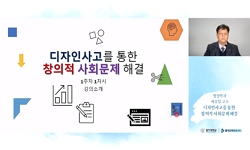This study aims to study the development of cultural products by utilizing relics from the Shenyang Palace Museum in Liaoning Province, the origin of the Manchu Cultures designated as World Heritage sites, in July 2004. As a world heritage site, the S...
http://chineseinput.net/에서 pinyin(병음)방식으로 중국어를 변환할 수 있습니다.
변환된 중국어를 복사하여 사용하시면 됩니다.
- 中文 을 입력하시려면 zhongwen을 입력하시고 space를누르시면됩니다.
- 北京 을 입력하시려면 beijing을 입력하시고 space를 누르시면 됩니다.

세계문화유산을 활용한 문화상품 디자인 개발의 방향 연구 - 중국 심양 고궁 박물관 상품을 중심으로 - = A Study on the Development direction of Cultural Product Design Using World Cultural Heritage - Focused on the Products of Shenyang Palace Museum in China -
한글로보기https://www.riss.kr/link?id=A106315871
- 저자
- 발행기관
- 학술지명
- 권호사항
-
발행연도
2019
-
작성언어
Korean
-
주제어
World Heritage ; Cultural Product ; Shenyang palace- Museum ; Product Design ; Tourism Industry ; 세계문화유산 ; 문화상품 ; 심양고궁 ; 박물관 ; 디자인
-
등재정보
KCI등재
-
자료형태
학술저널
- 발행기관 URL
-
수록면
103-117(15쪽)
-
KCI 피인용횟수
1
- DOI식별코드
- 제공처
- 소장기관
-
0
상세조회 -
0
다운로드
부가정보
다국어 초록 (Multilingual Abstract)
By finding the common ground and differences, it conducts value analysis on the development of cultural commodities in museums. which were studied over the last five years, looked into the causes of problems such as the lack of the ancient palace cultural products of Shenyang.
Therefore, I make some suggestions for the development of the cultural products of the ancient palace of Shenyang. First, there is a way to combine the cultural resources of the Shenyang Palace to revive the individuality of the local people and culture. It is to clarify the direction of the positioning and serialization of the cultural products of the Shenyang Palace. Second, it places importance on the quality of products by creating a reasonable product price system.
Third, innovative marketing methods are needed. Finally, through further research, we intend to develop a model of cultural products that embody local characteristics in order to study the development and promotion of cultural products in the museum of Shenyang Palace, and to contribute to the development of creative design cultural products that can contribute to the development of tourism industry in the Shenyang area through various surveys of local experts, ordinary people and visitors.
This study aims to study the development of cultural products by utilizing relics from the Shenyang Palace Museum in Liaoning Province, the origin of the Manchu Cultures designated as World Heritage sites, in July 2004. As a world heritage site, the Shenyang Palace Museum boasts a 400-year history as one of the double-headed carriages of palace-style buildings existing in China along with the capital city. The Shenyang Palace Museum has attracted 201,300 visitors annually in 2018, and surpassed the 2 million mark for the first time since it was listed as a World Heritage listing. However, the Shenyang Palace Museum in Liaoning Province started producing and releasing cultural products for the first time in 2014, and is still inexperienced in product design and brand development. Therefore, this study classifies similar cases at home and abroad with the same cultural commodities as the center, investigates the case analysis of design elements and the design status quo, and conducts comparative analysis.
By finding the common ground and differences, it conducts value analysis on the development of cultural commodities in museums. which were studied over the last five years, looked into the causes of problems such as the lack of the ancient palace cultural products of Shenyang.
Therefore, I make some suggestions for the development of the cultural products of the ancient palace of Shenyang. First, there is a way to combine the cultural resources of the Shenyang Palace to revive the individuality of the local people and culture. It is to clarify the direction of the positioning and serialization of the cultural products of the Shenyang Palace. Second, it places importance on the quality of products by creating a reasonable product price system.
Third, innovative marketing methods are needed. Finally, through further research, we intend to develop a model of cultural products that embody local characteristics in order to study the development and promotion of cultural products in the museum of Shenyang Palace, and to contribute to the development of creative design cultural products that can contribute to the development of tourism industry in the Shenyang area through various surveys of local experts, ordinary people and visitors.
국문 초록 (Abstract)
심양 고궁 문화 상품의 포지셔닝과 시리즈화의 방향을 명확히 하는 것이다. 둘째, 합리적인 제품 가격 체계를만들어 제품의 품질을 중시한다. 셋째, 혁신적인 마케팅 방식이 필요 하다. 마지막으로 차후 연구를 통해 심양고궁 박물관 문화상품의 개발과 홍보 방안을 연구하기 위해 지역의 특색을 살린 문화상품의 모델을 개발하고, 지역 전문가, 일반인, 방문객 등을 대상으로 다양한 설문조사를 통해 심양지역 관광산업의 발전에 일조할 수 있는 창의적 디자인 문화상품을 개발하는데 기여하고자 한다.
본 연구는 2004년 7월 세계문화유산으로 지정된 만청문화의 발원지인 요녕성 심양고궁 박물관의 유물을 활용한 문화상품 개발을 위한 연구이다. 세계문화유산으로써 400년 역사의 심양고궁 ...
본 연구는 2004년 7월 세계문화유산으로 지정된 만청문화의 발원지인 요녕성 심양고궁 박물관의 유물을 활용한 문화상품 개발을 위한 연구이다. 세계문화유산으로써 400년 역사의 심양고궁 박물관은 자금성과 함께 중국내 현존하는 궁전식(宫殿式)건축물의 쌍두마차 중 하나로 손꼽힌다. 심양고궁 박물관은 세계문화유산 등재 이후 2018년 연간 방문자수가 처음으로 200만 명을 넘어섰다. 그럼에도 불구하고 심양고궁 박물관을 대표할 수있는 문화상품이 없었으나, 2014년 처음으로 문화상품 등을 제작 및 출시하기 시작하였다. 하지만 상품 디자인이나 브랜드 개발이 아직 미숙한 상태이다. 따라서 본 연구에서는 국내·외의 유사 사례를 동일한 문화상품을중심으로 종류를 분류 하고 디자인 요소의 사례분석과 디자인 현황을 조사하여 비교 분석을 진행하여 공통점과차이성 발견을 통해 박물관의 문화상품 개발에 있어서 가치성 및 필요성을 분석하였다. 또한 최근 5년 동안 연구된 중국 내 심양고궁 문화상품에 대한 선행연구를 통해 현재 심양고궁의 유물을 활용한 문화상품개발에 있어서 문제점의 원인과 개선 방향성을 연구하였다. 앞의 과정들을 통해 심양 고궁 문화상품 개발을 위한 몇가지 제언을 하고자 한다. 첫째, 심양 고궁의 문화적 자원을 결합하여, 지역 민족과 문화의 개성을 살리는 방안이 있다.
심양 고궁 문화 상품의 포지셔닝과 시리즈화의 방향을 명확히 하는 것이다. 둘째, 합리적인 제품 가격 체계를만들어 제품의 품질을 중시한다. 셋째, 혁신적인 마케팅 방식이 필요 하다. 마지막으로 차후 연구를 통해 심양고궁 박물관 문화상품의 개발과 홍보 방안을 연구하기 위해 지역의 특색을 살린 문화상품의 모델을 개발하고, 지역 전문가, 일반인, 방문객 등을 대상으로 다양한 설문조사를 통해 심양지역 관광산업의 발전에 일조할 수 있는 창의적 디자인 문화상품을 개발하는데 기여하고자 한다.
참고문헌 (Reference)
1 "프랑스 베르사유궁 박물관"
2 "중국 심양 고궁 박물관"
3 "중국 북경 고궁 박물관"
4 "세계유산 신정 목록" UNESCO
5 엄사사, "세계문화유산을 활용한 장소마케팅에 대한 연구-중국 운남성 리장시 리장고성을 중심으로" 건국대학교 2016
6 서지연, "박물관 영역공간과 뮤지엄 샵(Museum shop)의 상관관계 연구" 서울산업대학교 IT디자인대학원 2008
7 한국희, "박물관 뮤지엄샵 문화상품개발 및 활성화 방안" 명지대학교 문화예술대학원 2009
8 박선희, "문화상품의 시장 활성화 방안 연구 : 아트 샵의 문화상품을 중심으로" 중앙대학교 예술대학원 2002
9 "러시아 모스크바 크렘린궁 박물관"
1 "프랑스 베르사유궁 박물관"
2 "중국 심양 고궁 박물관"
3 "중국 북경 고궁 박물관"
4 "세계유산 신정 목록" UNESCO
5 엄사사, "세계문화유산을 활용한 장소마케팅에 대한 연구-중국 운남성 리장시 리장고성을 중심으로" 건국대학교 2016
6 서지연, "박물관 영역공간과 뮤지엄 샵(Museum shop)의 상관관계 연구" 서울산업대학교 IT디자인대학원 2008
7 한국희, "박물관 뮤지엄샵 문화상품개발 및 활성화 방안" 명지대학교 문화예술대학원 2009
8 박선희, "문화상품의 시장 활성화 방안 연구 : 아트 샵의 문화상품을 중심으로" 중앙대학교 예술대학원 2002
9 "러시아 모스크바 크렘린궁 박물관"
동일학술지(권/호) 다른 논문
-
2D 이미지를 3D 입체로 물질화한 입체 작품의 특성 연구 - 무라카미 다카시와 피에르 위그의 작품을 중심으로 -
- 한국기초조형학회
- 장유정
- 2019
- KCI등재
-
코워킹 스페이스에 나타난 공간의 컨텍스트적 표현 특성 연구
- 한국기초조형학회
- 최비범
- 2019
- KCI등재
-
헤드 마운티드 디스플레이(HMD) 기반 가상현실 디자인 사례 연구: 시지각 특성에 따른 사용자 경험을 중심으로
- 한국기초조형학회
- 정새해
- 2019
- KCI등재
-
알베르토 메다의 기술융합 디자인 리서치와 콜라보레이션 프로젝트에 관한 연구 - 1980년대와 1990년대를 중심으로 -
- 한국기초조형학회
- 양영완
- 2019
- KCI등재
분석정보
인용정보 인용지수 설명보기
학술지 이력
| 연월일 | 이력구분 | 이력상세 | 등재구분 |
|---|---|---|---|
| 2027 | 평가예정 | 재인증평가 신청대상 (재인증) | |
| 2021-01-01 | 평가 | 등재학술지 유지 (재인증) |  |
| 2018-01-01 | 평가 | 등재학술지 유지 (등재유지) |  |
| 2015-02-09 | 학술지명변경 | 외국어명 : Bulletin of Korean Society of Basic Design & Art -> Journal of Basic Design & Art |  |
| 2015-01-01 | 평가 | 등재학술지 유지 (등재유지) |  |
| 2011-01-01 | 평가 | 등재학술지 유지 (등재유지) |  |
| 2009-01-01 | 평가 | 등재학술지 유지 (등재유지) |  |
| 2006-01-01 | 평가 | 등재학술지 선정 (등재후보2차) |  |
| 2005-01-01 | 평가 | 등재후보 1차 PASS (등재후보1차) |  |
| 2003-01-01 | 평가 | 등재후보학술지 선정 (신규평가) |  |
학술지 인용정보
| 기준연도 | WOS-KCI 통합IF(2년) | KCIF(2년) | KCIF(3년) |
|---|---|---|---|
| 2016 | 0.33 | 0.33 | 0.34 |
| KCIF(4년) | KCIF(5년) | 중심성지수(3년) | 즉시성지수 |
| 0.34 | 0.34 | 0.512 | 0.08 |





 KCI
KCI DBpia
DBpia







